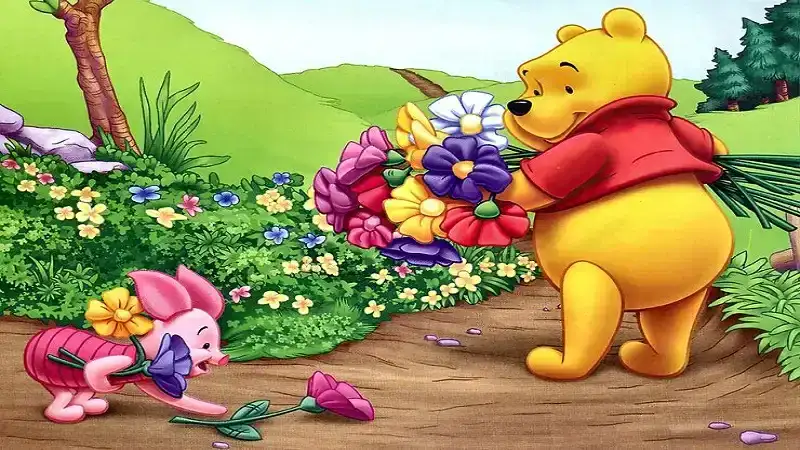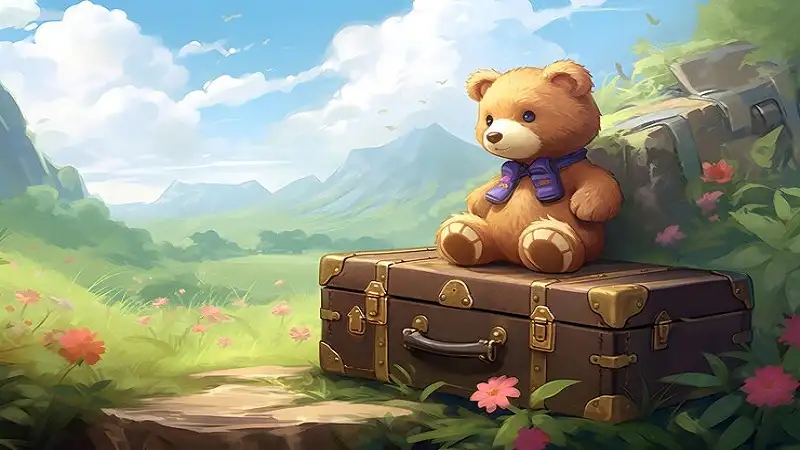Drawing:A0qvdjow_ti= Winnie The Pooh the honey-loving bear with a big heart, has been a beloved character for generations. Created by A.A. Milne, this whimsical bear from the Hundred Acre Wood represents more than just a children’s story; he embodies simplicity, friendship, and the innocence of childhood. But what is it about Winnie the Pooh that captures the hearts of readers around the world? Let’s take a delightful journey through the origins, characters, and cultural impact of Winnie the Pooh.
The Origin of Winnie the Pooh
Drawing:A0qvdjow_ti= Winnie The Pooh was brought to life by British author A.A. Milne in the 1920s. Inspired by his son, Christopher Robin Milne, and a teddy bear he owned, A.A. Milne created a series of stories set in the Hundred Acre Wood. But the inspiration didn’t stop there. The character of Winnie the Pooh was also inspired by a real-life bear named Winnipeg, or “Winnie” for short, who was a popular attraction at the London Zoo. This bear was a favorite of Christopher Robin, further fueling the imagination that led to these timeless tales.
The Characters of the Hundred Acre Wood
Drawing:A0qvdjow_ti= Winnie The Pooh is not alone in his adventures. He is joined by a delightful cast of characters, each with their unique quirks and charm.
Winnie the Pooh – The Loveable Bear
Pooh, or Pooh Bear, is a bear of very little brain but a lot of heart. With his insatiable love for honey and his laid-back, carefree demeanor, Pooh represents a simplistic, joyful approach to life. He often finds himself in sticky situations but always manages to find his way out with the help of his friends.
Christopher Robin – The Boy Who Brings the Story to Life
Christopher Robin is the young boy who serves as the glue that holds the Hundred Acre Wood together. He is wise, brave, and always ready to help his friends, showing maturity beyond his years.
Piglet – Pooh’s Best Friend
Piglet, the small and timid pig, is Pooh’s closest companion. Despite his size and fearfulness, Piglet often shows great courage, demonstrating that bravery comes in all shapes and sizes.
Eeyore – The Gloomy Yet Lovable Donkey
Eeyore is known for his gloomy outlook and slow, melancholic demeanor. However, his friends love him dearly, and he often provides a different perspective that balances the group.
Tigger – The Bouncy, Exuberant Tiger
Tigger is the life of the party, always bouncing around with energy and enthusiasm. His motto, “Bouncing is what Tiggers do best!” captures his infectious spirit and love for life.
Rabbit, Owl, Kanga, and Roo – Other Notable Characters
Each of these characters adds their unique flavor to the Hundred Acre Wood. Rabbit is practical and somewhat fussy; Owl is wise and loves to share his knowledge; Kanga is the nurturing mother figure, and Roo is the curious and adventurous child.
The Themes in Winnie the Pooh
Winnie the Pooh stories are filled with deep, meaningful themes that resonate with readers of all ages.
Friendship and Loyalty
At the core of every story is the theme of friendship. The characters support each other through thick and thin, showing that true friendship knows no bounds.
Simplicity and Mindfulness
Drawing:A0qvdjow_ti= Winnie The Pooh embodies a simple, mindful approach to life. Pooh’s calm demeanor and enjoyment of simple pleasures, like a pot of honey or a stroll in the forest, remind us to slow down and appreciate the little things.
Courage and Kindness
Even in the face of fear or uncertainty, the characters display courage and kindness, teaching valuable lessons about facing life’s challenges with a positive attitude.
The Books and Stories
A.A. Milne’s original stories have been adapted many times over the years. The most famous include “Winnie-the-Pooh” (1926) and “The House at Pooh Corner” (1928). These stories continue to be published and cherished, introducing new generations to the magic of the Hundred Acre Wood.
Winnie the Pooh in Popular Culture
The Disney Adaptations
Walt Disney acquired the rights to Winnie the Pooh in the 1960s and transformed the stories into animated features. These adaptations brought Pooh and his friends to a wider audience, ensuring their place in popular culture.
Merchandise and Collectibles
From toys to clothing, Winnie the Pooh merchandise is everywhere. Collectors around the world cherish memorabilia featuring Pooh and his friends, making them a staple in homes and hearts alike.
Pooh’s Presence in Media and Entertainment
Beyond books and movies, Winnie the Pooh has appeared in numerous TV shows, games, and even theme parks. His friendly face is recognized globally, proving the character’s enduring appeal.
Why Winnie the Pooh Continues to Capture Hearts
What is it about Winnie the Pooh that continues to charm audiences worldwide?
Timeless Lessons from the Stories
Each Winnie the Pooh story offers gentle wisdom that is both simple and profound, resonating with readers of all ages.
The Appeal of the Characters
The unique personalities of Pooh and his friends make them relatable to people from all walks of life. Their quirks and adventures create a sense of familiarity and warmth.
The Universal Themes Explored in the Stories
Themes such as friendship, courage, and kindness are universally relevant, making these stories meaningful across cultures and generations.
Winnie the Pooh’s Impact on Mental Health
How Pooh Promotes Mindfulness and Positivity
Many people find comfort in Winnie the Pooh’s philosophy of enjoying the present moment. His stories encourage mindfulness, helping readers of all ages to live with less anxiety and more joy.
The Therapeutic Value of the Stories for Children and Adults
Winnie the Pooh stories offer a sense of comfort and security, often used in therapeutic settings to promote mental health and well-being.
The Symbolism in Winnie the Pooh
Winnie the Pooh is often interpreted as a representation of different personality types. Each character embodies a different trait, providing a mirror for readers to understand themselves and others better.
Famous Quotes from Winnie the Pooh
Quotes like “You’re braver than you believe, stronger than you seem, and smarter than you think,” resonate with readers, providing inspiration and encouragement.
Winnie the Pooh’s Global Reach
Publishers have translated Winnie the Pooh into multiple languages, turning it into a global phenomenon that transcends cultural boundaries.
Fun Facts about Winnie the Pooh
Did you know that Winnie the Pooh’s original name was Edward Bear? Or that Pooh is one of the few characters to have a star on the Hollywood Walk of Fame?
Visiting the Real Hundred Acre Wood
The Ashdown Forest in East Sussex, England, is the real-life inspiration for the Hundred Acre Wood. Fans can visit and explore the area, reliving the adventures of Pooh and his friends.
The Legacy of Winnie the Pooh
Winnie the Pooh’s stories have cemented their place in literary history, thanks to A.A. Milne’s creative genius. The characters and themes continue to influence children’s literature and pop culture.
Conclusion
Drawing:A0qvdjow_ti= Winnie The Pooh remains a beloved character, teaching us to appreciate the simple joys in life, cherish our friendships, and embrace kindness. His stories continue to bring warmth and comfort to readers around the world, proving that sometimes, the simplest things hold the most profound truths.
FAQs
- What inspired A.A. Milne to create Winnie the Pooh?
A.A. Milne was inspired by his son, Christopher Robin, and his son’s teddy bear, as well as a real bear named Winnipeg. - Who are the main characters in Winnie the Pooh?
The main characters are Winnie the Pooh, Christopher Robin, Piglet, Eeyore, Tigger, Rabbit, Owl, Kanga, and Roo.

